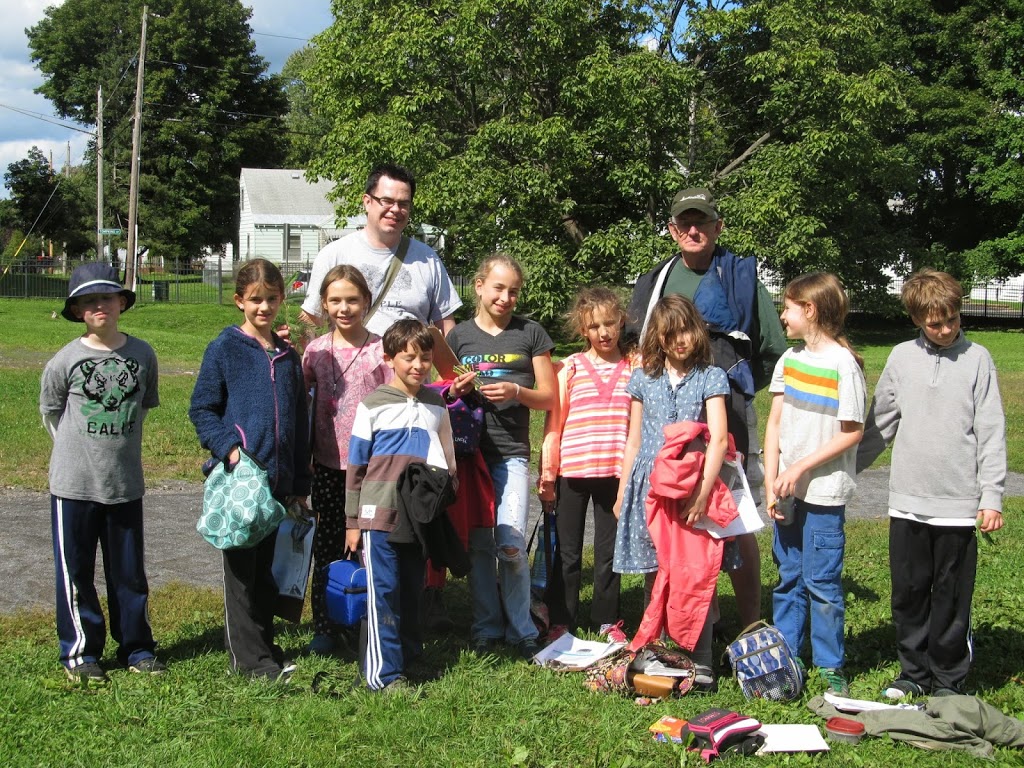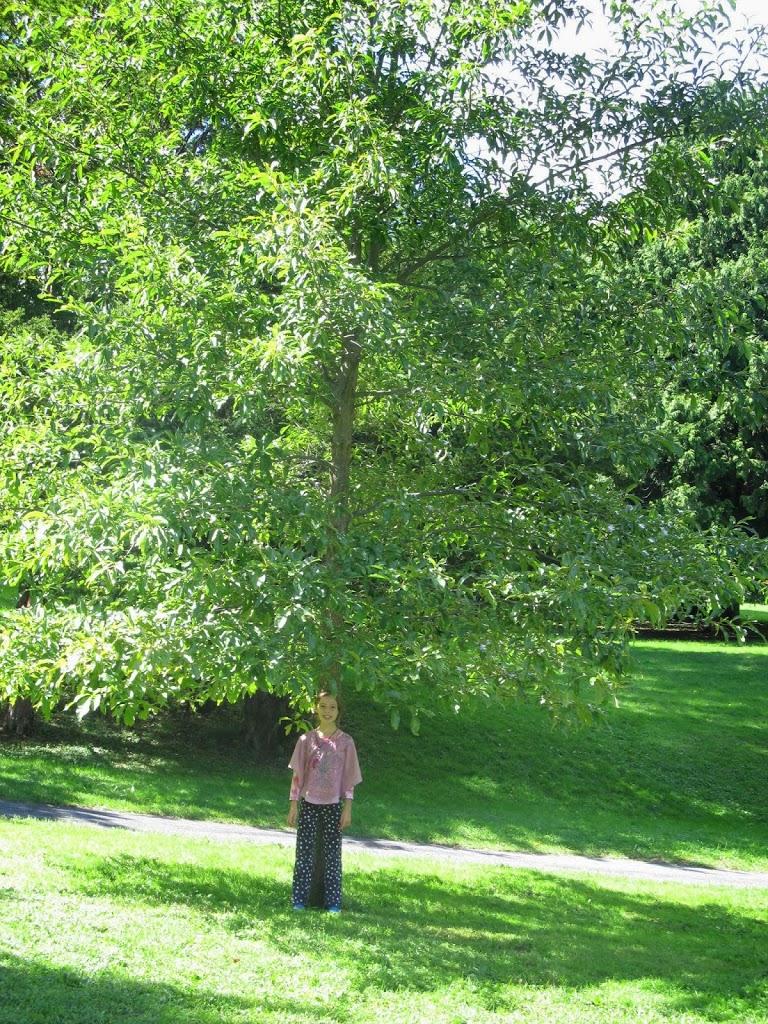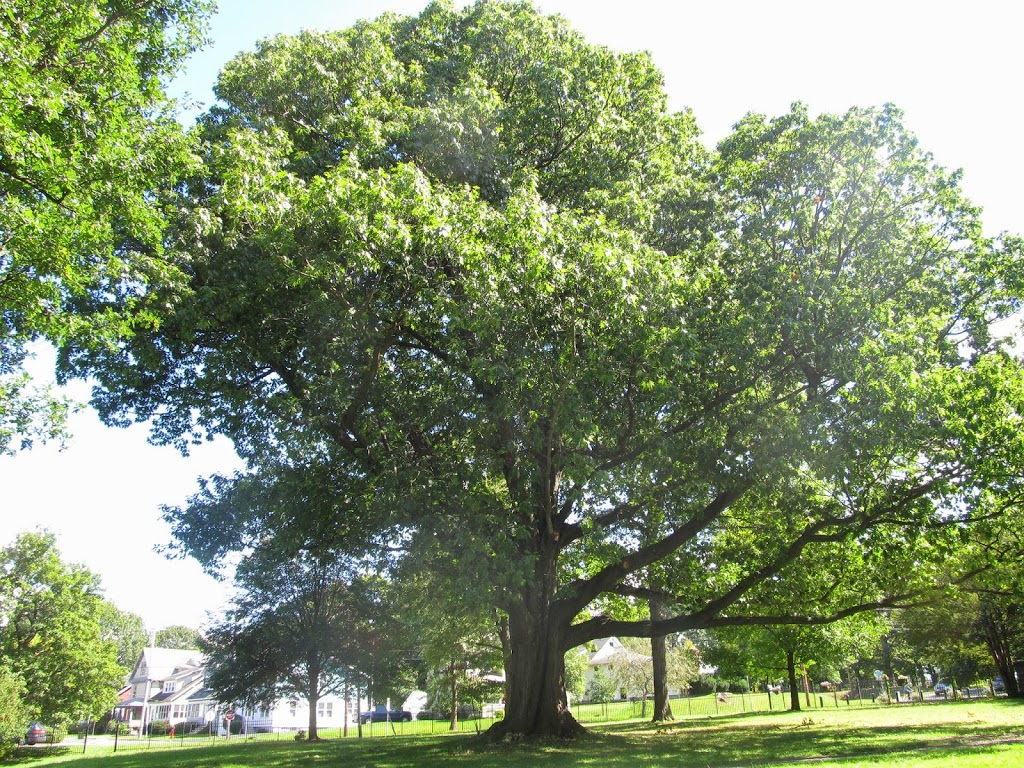The older students (ages 9 to 12) have embarked on a tree exploration. They started out looking at how trees grow – by observing their rings. We soon learned that not only can you tell how old a tree is by its rings, but you can also determine whether it was a “good” growing year or “bad.” Then each student was assigned a specific tree to study over the course of the year. They will observe the changes that take place in the fall, winter and spring. Our first field trip took place this week as we set off to visit the James Pass Arboretum – a resource in Syracuse that not many people know anything about.
“The James Pass Arboretum was donated to the City of Syracuse on Arbor Day, 1925, by Adelaide Pass in memory of her late husband James Pass. The 13.8 acre plot is at the City’s west edge. Adelaide intended that her gift be used as a “scientifically managed collection of trees and shrubs able to survive the climate in Central New York.”
Armed with a description of their tree, its habit, leaf, bark and fruit the children were sent on a scavenger hunt to find their tree in James Pass Arboretum! And they did. They found Amur Cork, Dawn Redwood, Red Oak, American Beech, Japanese Larch, Sycamore and the list goes on. There are 19 different species of trees in our study. The children then had to measure the circumference of their tree, sketch it, and make observational notes about its bark, leaf and more.
And as if that wasn’t enough fun, we were joined by two experts who volunteered their immeasurable expertise about trees and the arboretum. Tim Reglin is able to identify each and every tree in the arboretum and share information about the tree’s history. Tim volunteers daily in the arboretum to care for the trees. James Johnson, a master’s student of Plant Ecology at SUNY ESF, also joined us and helped children and teachers learn so many interesting facts about each tree.




